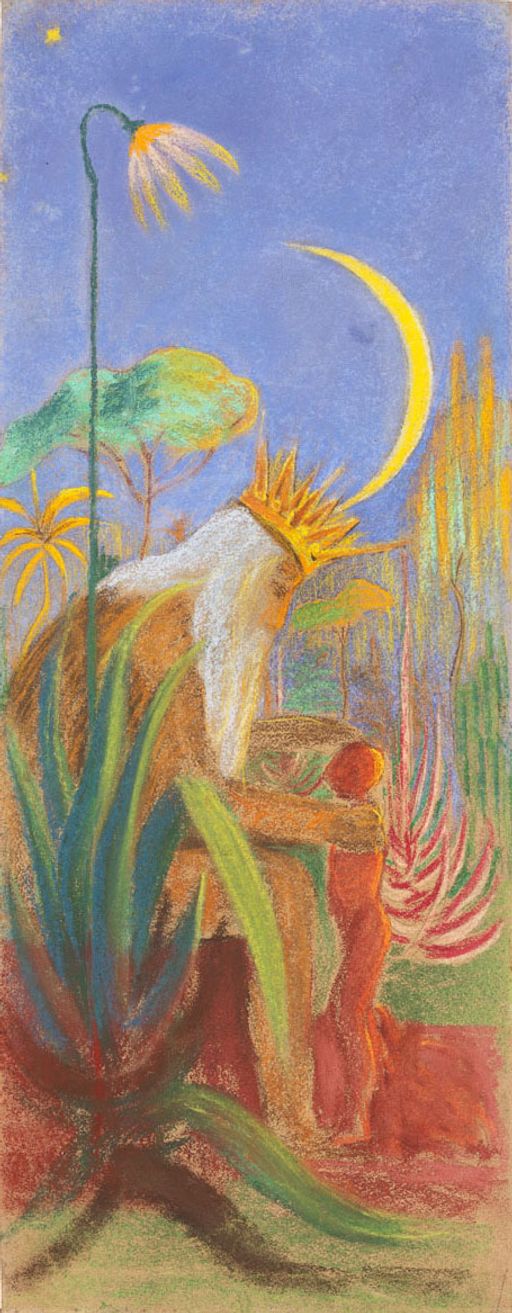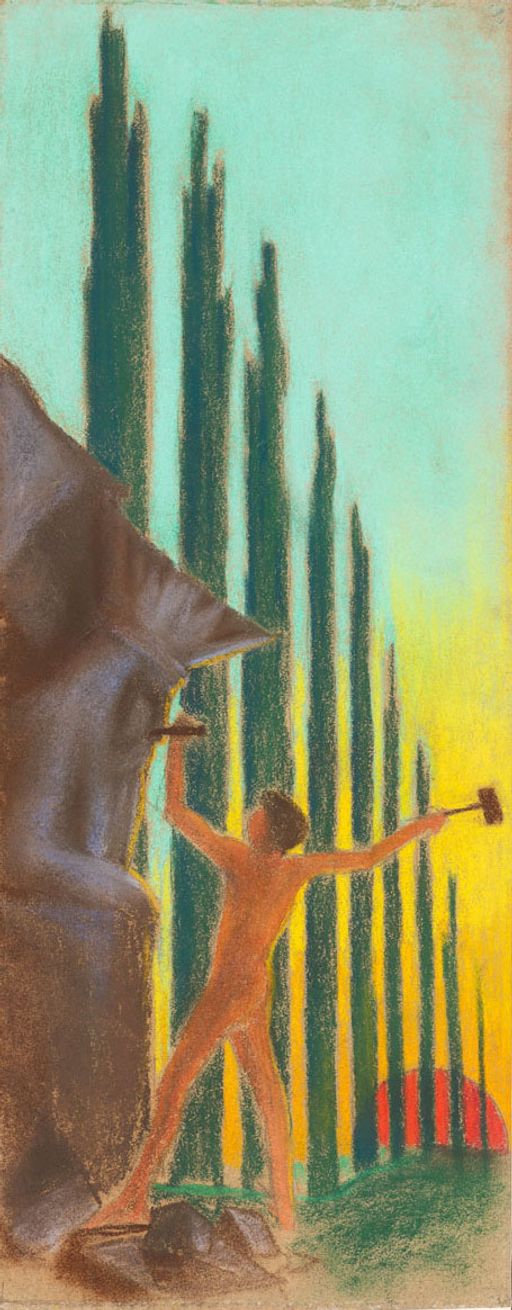Rex. Diptych for Stained Glass

Rex. Diptych for Stained Glass
The first piece in the stained-glass diptych depicts the crown-bearing Rex molding a human figure in a blooming Paradise. The second portrays a man carving the image of God into a cliff face – as if the carving was a memory of who had made him.
It may seem that the idea and narrative behind the stained-glass pieces is sufficiently clear, but various other elements can also be observed. According to F. Rozner (Roziner F. Iskusstvo Čiurlionisa. Moscow: 1993, 108), the first approach to this painting could be described as follows: in Paradise, God created man in his own image, and man, living on Earth (which can in no way match the perfection of Paradise), holds the act of divine creation in his memory and creates the image of God, just as he imagines it, on the rock face. It also might be interpreted thus: in the sunset of the fantastic Rex's existence, as the glow of the evening subsides, the Rex creates a young being who is fated to continue the legacy of the Rex within him and preserve his memory or even become a Rex himself. And here he is immortalizing the image of the faded divinity in stone. This interpretation explains the presence of the moon in the picture depicting the act of creation and the sunrise in the second image. The night and moon symbolize departure, and the sunrise reflects the arrival of new life and divine energy.

